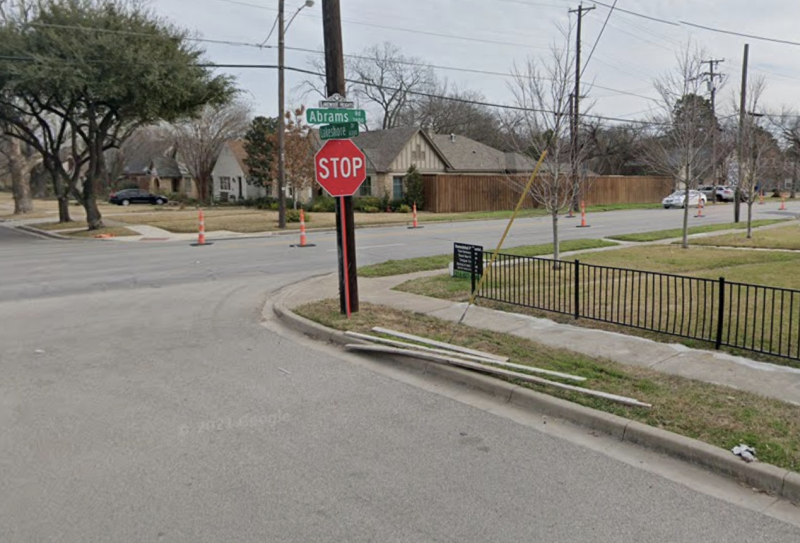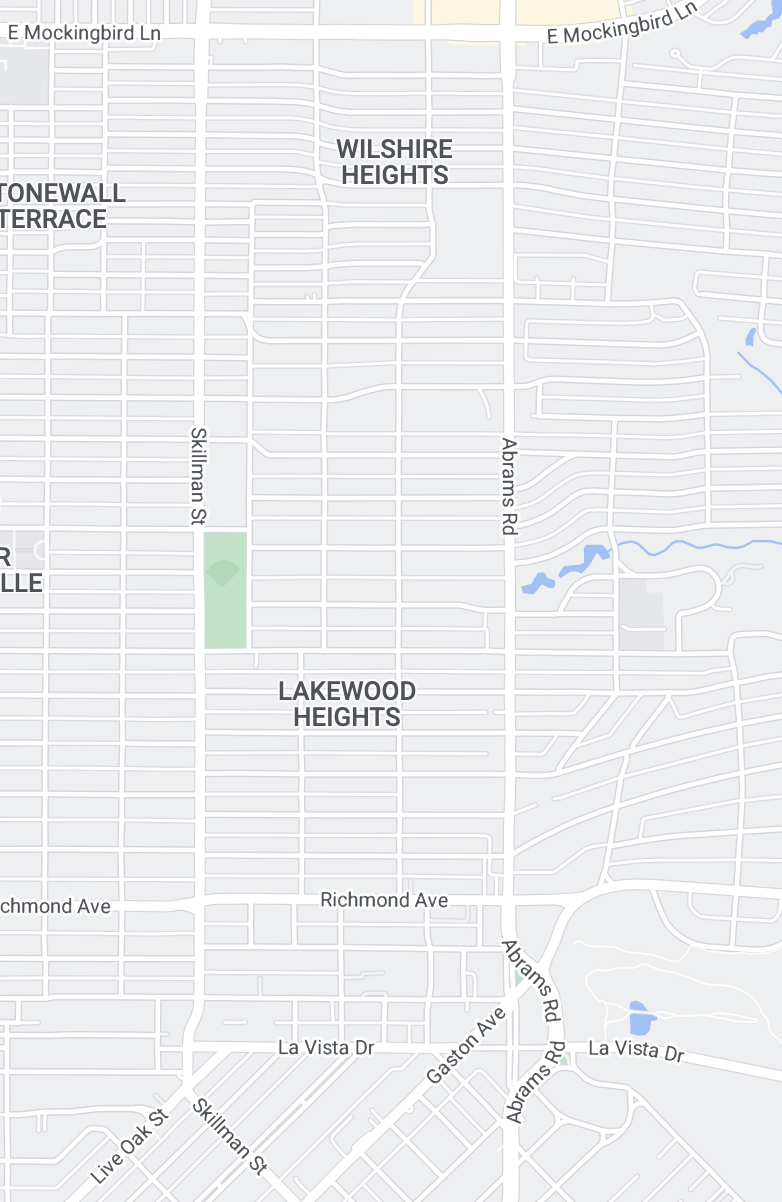
Photo courtesy of Google Maps.
East Dallas neighbors asked the City not to approve a contract to install a traffic signal at the Lakeshore-Abrams intersection.
In a letter, they asked District 9 Council member Paula Blackmon and District 14 Council member Paul Ridley to hold off on seeking full Council approval for a contract until the City completes a corridor study of Abrams Road from Mockingbird Lane to Gaston Avenue and Skillman Street from Mockingbird Lane to Live Oak Street.
The City Attorney, who is handling all questions for this matter, has no comment on the letter.
David Shinn, a Lakewood Heights homeowner who has lived in East Dallas since the 1970s, says it’s important that the City completes studies of both the Skillman and Abrams corridors instead of examining one intersection in isolation. He wants to help amplify neighbors’ voices and make streets safer, calmer and slower.

Map showing Skillman Street and Abrams Road from Mockingbird Lane to Gaston Avenue and Live Oak Street.
“A study will result in a better use of taxpayer money,” neighbors who live along the eastern and western sides of Abrams wrote. “The proposed signal will not solve the issues regarding left-hand turns and will likely only push traffic congestion and issues further up Abrams as drivers cut through the neighborhoods, making left-hand turns, to avoid sitting in traffic.”
As of February, the Department of Transportation was working to identify funding to be used for a study of Abrams Road, particularly in terms of transportation improvements. Overall, that process is expected to take at least two years.
Concerns about the design of the signal were voiced at the December meeting, where community members heard from City staff about designs for the proposed traffic signal at the Abrams Road-Lakeshore Drive intersection. However, according to the letter, some neighbors have been talking with the City about a signal at this intersection since 2016.
In the letter, neighbors say they believe the signal is not legally required. Chapter 28 of the City Code says the traffic engineer “shall place and maintain traffic control signs, signals, and devices in accordance with these studies and determinations as required under this chapter and other traffic laws.”
Neighbors say they believe those “other traffic laws” include the Manual on Uniform Traffic Control Devices (MUTCD), which doesn’t set a requirement for particular traffic control devices to be installed. It also says that the satisfaction of one or more warrants doesn’t necessarily mean a traffic signal has to be installed.
City staff told neighbors at the December meeting that warrant 2 (four-hour vehicular volume) was met, and if another study was done, warrant 7 (crash experience) would likely be met. The City is required to constantly evaluate roadways to make sure they’re safe.
Neighbors “question whether warrant 2 was truly met” and say they disagree that all of the criteria for warrant 7 would be met, either.
To satisfy warrant 7, all criteria listed under it in the MUTCD must be met; the first item is “adequate trial of alternatives with satisfactory observance and enforcement has failed to reduce the crash frequency.”
“Even if the City had a legal basis to do so, it cannot point to any emergency that would justify foregoing a study of alternatives to a traffic signal, particularly because it has now had the 2017 Warrant Study in hand for 5 years,” neighbors write.
The last update we received was that the signal is being redesigned and will be installed once that process is complete.





